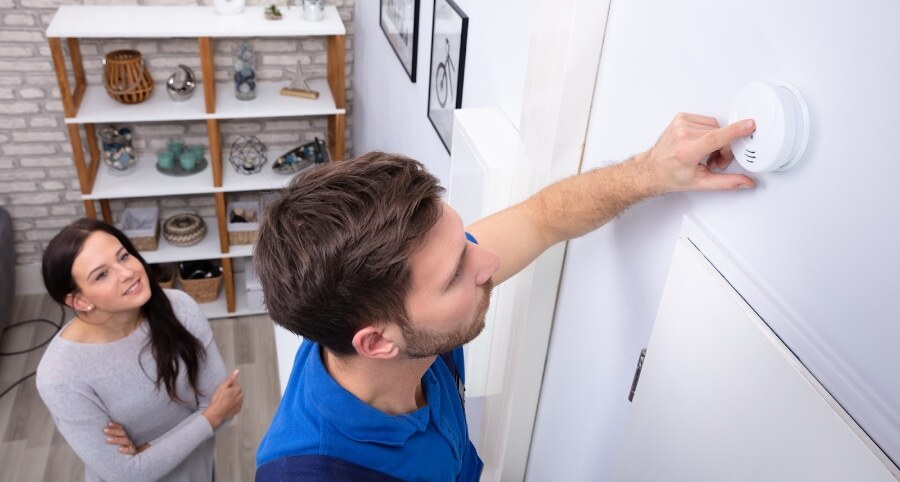Where to install carbon monoxide detectors in your Logan home

Carbon monoxide is different from other threats home occupants confront as you are unable to identify it by smell or sight. Despite the fact it’s not identifiable by human senses like flooding, fire, and smoke, you may still easily and effectively protect yourself with CO detectors. Discover where to install carbon monoxide detectors in your Logan property and learn about the advantages of integrating them in your comprehensive security plan.
Where is carbon monoxide found?
Because of its absence of odor and color, carbon monoxide has gained the nickname of the silent killer. It emerges because of an incomplete consumption of fuels in common appliances like fireplaces, generators, gas stoves, and furnaces. Most families won’t experience problems with their fuel-burning appliances if they maintain them properly. But if you forget about regular service or don’t have necessary ventilation, an accumulation of this potentially deadly gas could take place.
Early indicators of CO poisoning include dizziness, headaches, nausea, and vomiting. These typically occur at low concentrations of CO. Being subjected to higher amounts for a longer time can lead to life-threathening complications and even death.
Recommendations on where to install Logan carbon monoxide detectors
Every home should have a minimum of one carbon monoxide detector. Really, you should install them on each floor, and that includes basements where fuel-burning appliances are often found. Use these suggestions on where to install Logan carbon monoxide detectors:
-
Install one within 10 feet of sleeping areas. This placement is vital, so affix it here in the event you only opt for one carbon monoxide detector.
-
It’s smart to have a carbon monoxide detector on every floor of your house, particularly on floors with fuel-burning appliances.
-
To prevent false alarms, keep them no less than 10 feet from causes of carbon monoxide, like furnaces. A non-hazardous amount of CO could be discharged when appliances start up.
- Avoid installing near windows and doors, as exterior air will lessen the unit’s effectiveness.
-
Place them in areas above attached garages.
Like you would with fire alarms, check your CO units per manufacturer guidelines, clean them occasionally, and avoid mistakenly leaving something next to them. In general, switch out your detectors every 5-7 years.
Improve safety by integrating CO detectors into your home’s security system
Today’s home security systems provide more layers of protection than you’ve ever had before. As a matter of fact, you can add carbon monoxide detectors and other safety alarms straight into your system. You and your monitoring agents will be alerted whenever your component signals danger. This type of backup is valuable in the event you don’t hear the alarm or if you’re not home.
Improve safety by integrating CO detectors into your home’s security system
Today’s home security systems provide more layers of protection than you’ve ever had before. As a matter of fact, you can add carbon monoxide detectors and other safety alarms straight into your system. You and your monitoring agents will be alerted whenever your component signals danger. This type of backup is valuable in the event you don’t hear the alarm or if you’re not home.
Install CO detectors with your Vivint smart home in Logan
